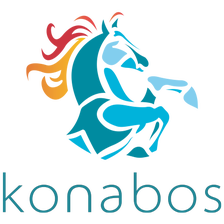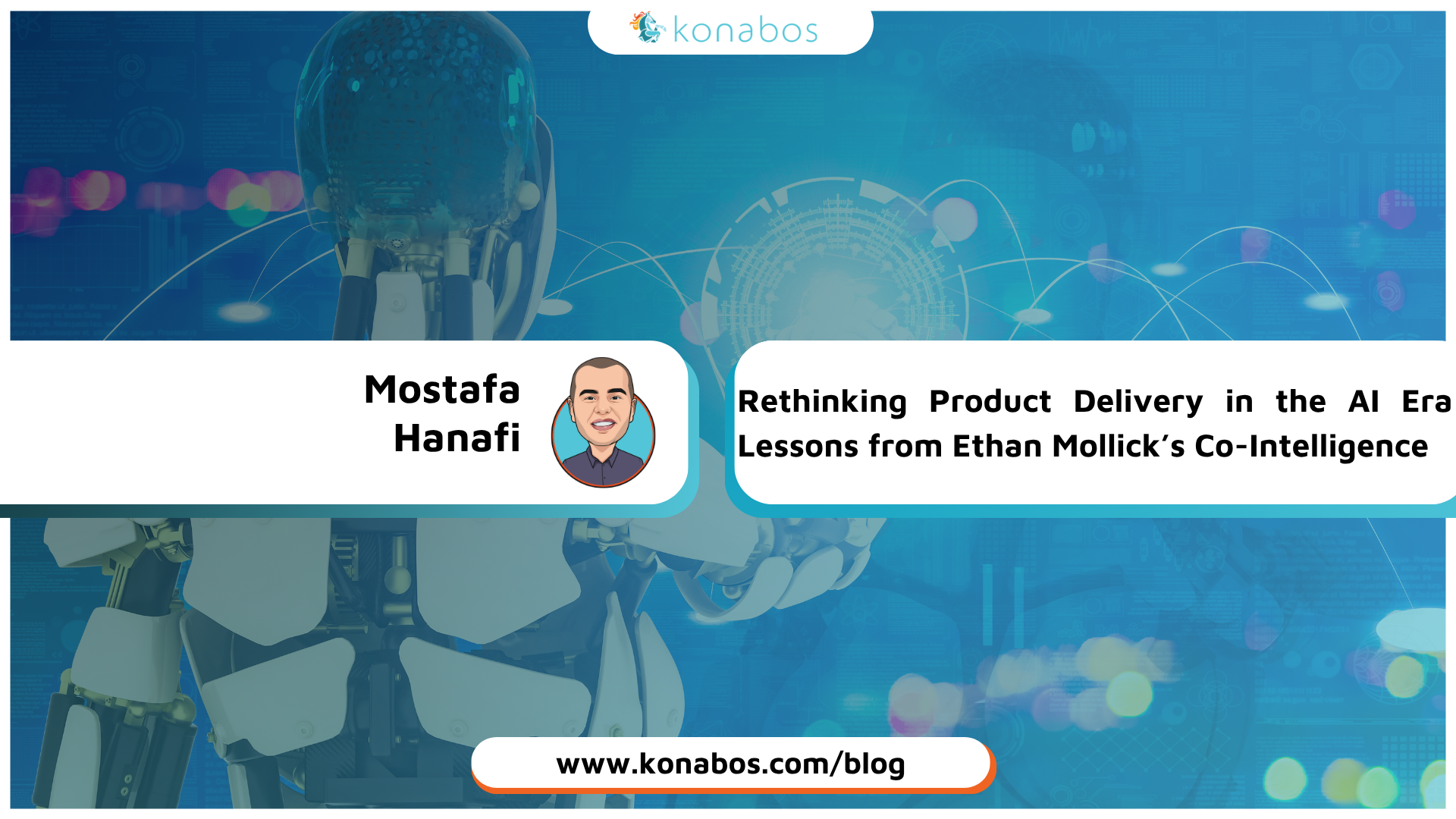Rethinking Product Delivery in the AI Era: Lessons from Ethan Mollick’s Co-Intelligence
Mostafa Hanafi - Program Manager
28 May 2025
Ethan Mollick’s Co-Intelligence: Living and Working with AI could not have come at a better time for product leaders. As AI reshapes how we discover, design, and deliver products, Mollick offers a crucial reframe: AI is not just a productivity tool, it is a collaborative partner that can fundamentally change how we work. I personally found this book not just timely, but essential, and in this post, I will highlight its lessons for product managers and share actionable takeaways for teams delivering software products in the age of AI.
Mollick’s core premise that AI works best as co-intelligence directly challenges how PMs typically use technology: "AI is not just a tool; it is a participant in the creative process. It changes how we think, how we work, and how we solve problems."
1. Decision-Making in Product Strategy
Mollick frames AI as a “force multiplier for creativity and judgment.” He writes, “AI will not replace managers it will make the best managers better, and the worst, obsolete.” This has direct implications for product strategy. When setting a vision, analyzing customer feedback, or assessing competitive moves, we now have access to AI tools that can crunch massive amounts of data unbiasedly, recognize patterns human eyes might miss, and draft hypotheses at great speed.
Example: Use AI to analyze your support tickets, customer feedback and user interviews data to provide insights on issues with your products and services. Then use this analysis to decide on what your team should prioritize in the next development cycle.
Key Lesson: Leverage AI as an analytical partner, not a substitute for strategic vision. AI can rapidly synthesize massive user feedback sets, but it takes your human context and business intuition to turn insight into action.
2. Building an AI-Enabled Product Team
Mollick emphasizes that “AI has changed the nature of individual excellence, but even more so, it has transformed what teams can accomplish together.” He writes, “The highest-performing teams will be those that collaborate deeply with AI using it as a teammate, not just a tool.” This insight pushes us to rethink team composition, culture, and capability-building for the modern product organization. In the AI era, building a product team is no longer just about assembling developers, designers, and product managers with the right domain expertise. Now, the team’s capacity to interface with, and leverage AI systems has become crucial for high performance. Today’s AI-augmented teams can automate routine research, rapidly prototype new features, and simulate user flows before a line of code is written.
Example: Empower your product team to use AI for creative work, such as drafting user stories, generating mockups, or proposing alternative flows. Make prompt engineering and AI tool literacy core competencies. A designer could use an AI image generator to instantly explore hundreds of logo variations, while a developer utilizes code copilots for efficiency and rapid testing, and a PM leverages AI tools to analyze app store reviews and in-product feedback, quickly surfacing recurring pain points or requests.
Key Lesson: AI does not just augment individual roles; it enables teams to operate at a new level of collective intelligence. But this requires intention: create team rituals that encourage experimentation with AI, set up working agreements for reviewing AI-generated artifacts, and make space for discussion on ethical and quality standards.
3. Experimentation and Predictions in the Age of AI
In Co-Intelligence, Mollick highlights the transformative role AI plays in running experiments and making predictions, where “AI lets us simulate, test, and forecast at a pace and scale that was unimaginable even a few years ago.” For product teams, this means a fundamental shift: experimentation is no longer a slow, resource-intensive luxury, but a core part of the everyday workflow. AI tools can simulate user interactions, analyze scenarios, and help forecast feature impact before the feature is even released. This supercharges both product discovery and validation. Teams can generate hypotheses, use AI to model potential outcomes, and rapidly iterate, thus making product intuition more data-driven and predictive analytics a routine part of decision-making.
Example: Use AI to A/B test mockups digitally, simulate user behavior through AI-powered personas, or predict feature adoption rates by analyzing past launches and current market signals. With the right prompts, a PM could ask an AI to forecast the impact of a new onboarding flow for specific personas, then analyze the forecast and use it as guidance for testing with real users whenever possible.
Key Lesson: AI-enabled experimentation allows for better insights and takes guesswork out of roadmap decisions but human judgment is still essential for framing the right questions, interpreting results, and understanding edge cases. As Mollick writes, “What we choose to test and how we evaluate outcomes still relies on human curiosity and wisdom.”
The future is not about being able to run more experiments; it is about teams who can turn AI-generated predictions into smarter, faster, and better validated product ideas.
To conclude, here are the key methods to unlock Co-Intelligence for your product teams:
- Elevate, Do not Replace: AI is your teammate, not just your tool let it amplify creativity and judgment, not substitute your strategic vision.
- Build Collective Intelligence: The best teams are those where everyone gets hands-on with AI, weaving its capabilities into daily workflows, rituals, and decision-making.
- Experiment at Hyper-speed: Use AI to transform experimentation into a daily superpower; model, predict, and iterate with agility but always bring critical human perspective to the loop.
“The future will be built by those who are willing to learn, experiment, and collaborate not just with each other, but with AI itself. The greatest risk is not misusing AI but failing to use it at all.” Ethan Mollick
The era of co-intelligence has arrived, it is now time to embrace it, experiment boldly, and shape the future of your products!

Mostafa Hanafi
Mostafa is an experienced Project Manager and Scrum Master who has been managing Sitecore projects for more than 8 years. During his 12 years of experience in the field, Mostafa has also excelled as a Business Analyst and Product Manager, where he practices his passion for solving problems. In addition, Mostafa is also a two-time Sitecore MVP. As a Program Manager at Konabos, Mostafa will work with clients to ensure their business goals are achieved in the most efficient and cost-effective way.



Share on social media